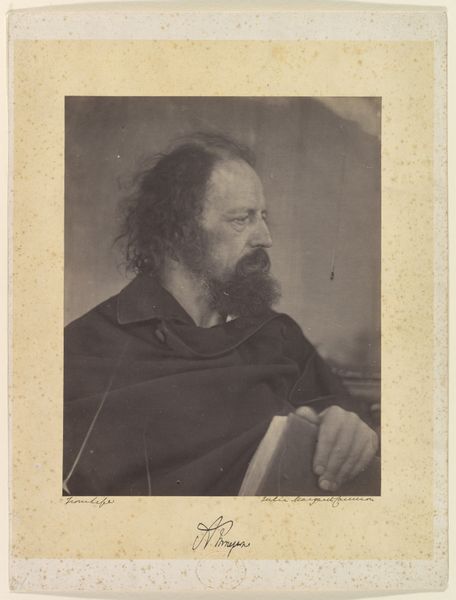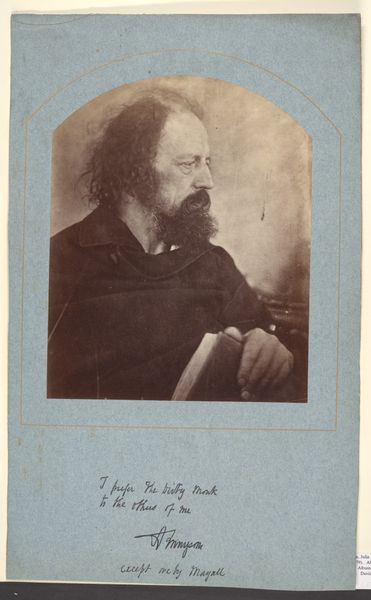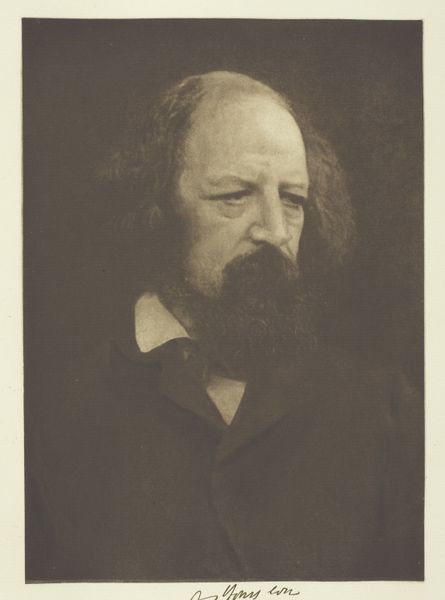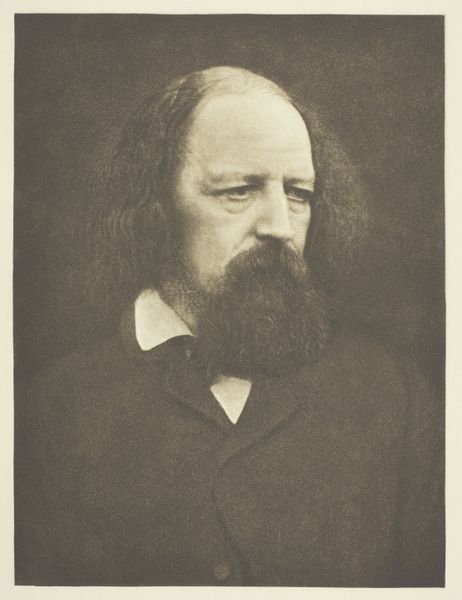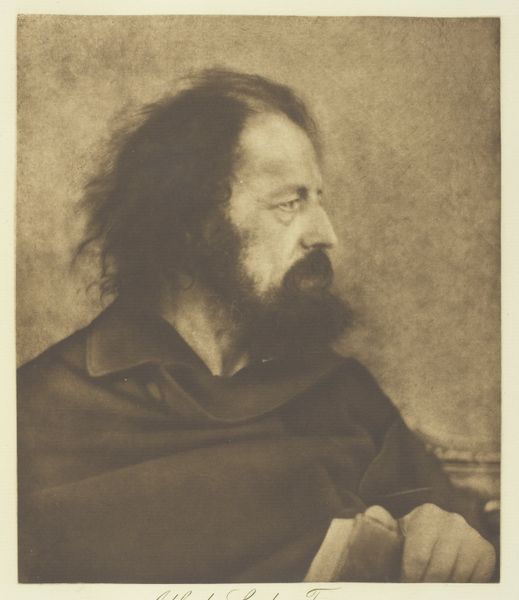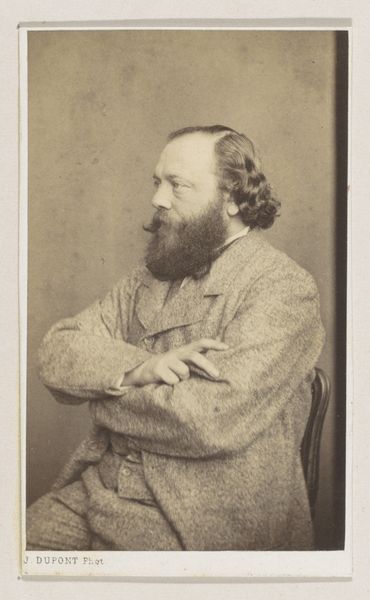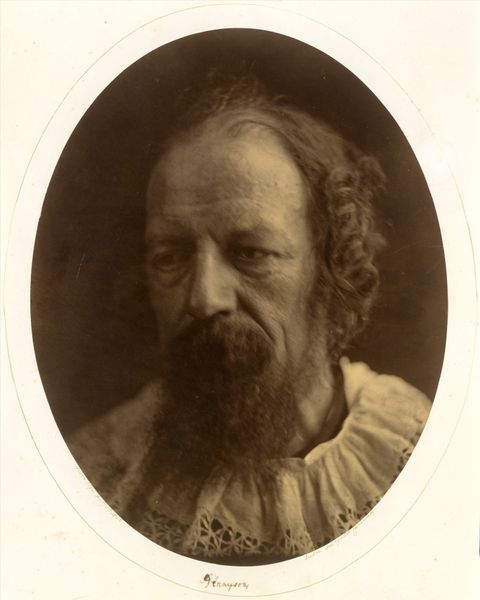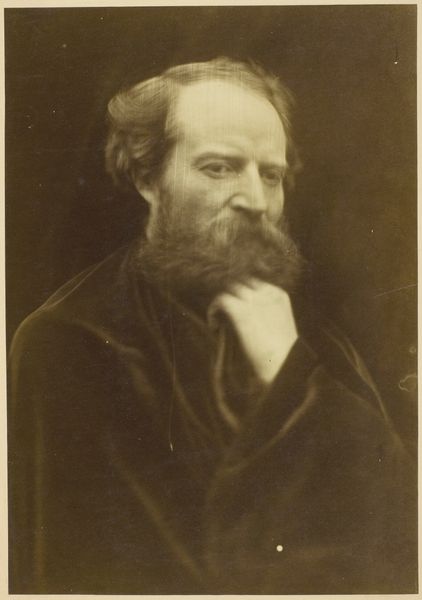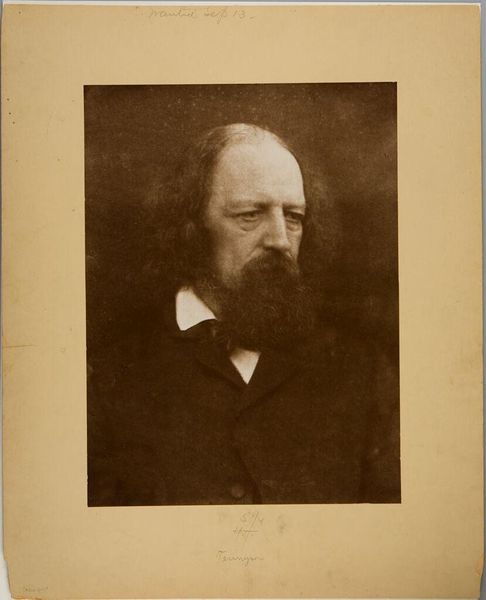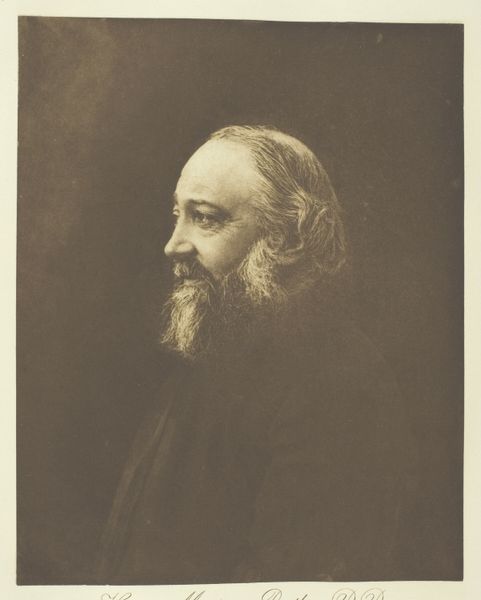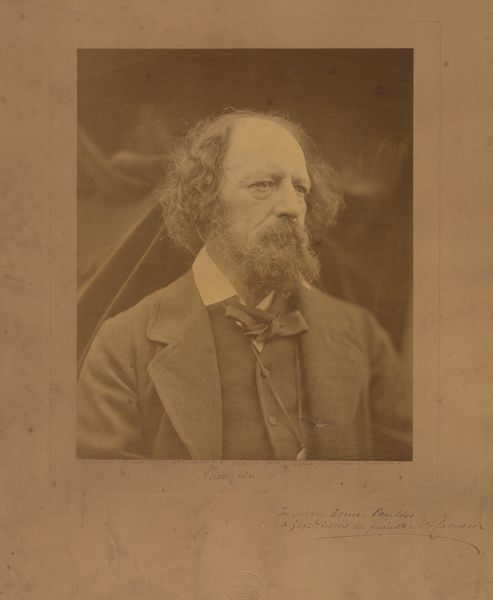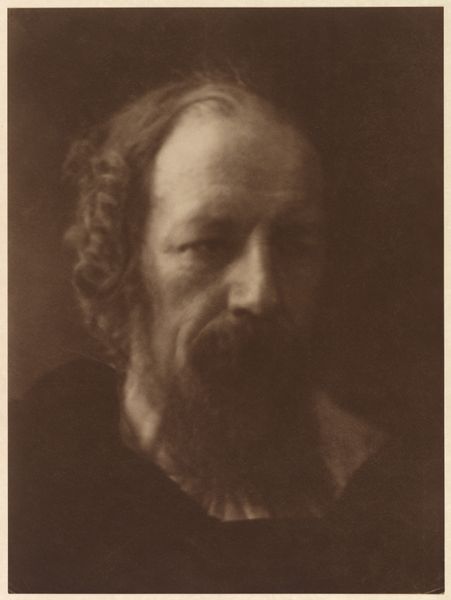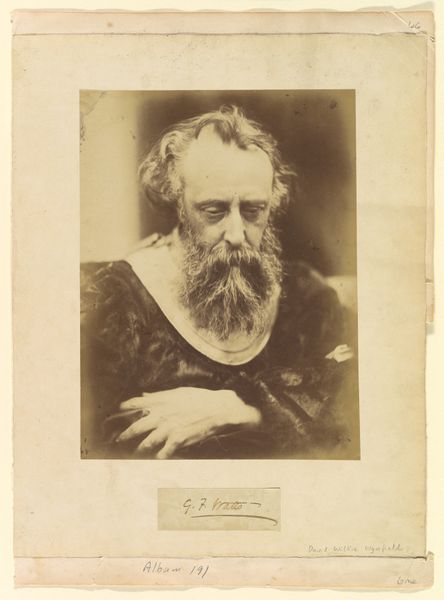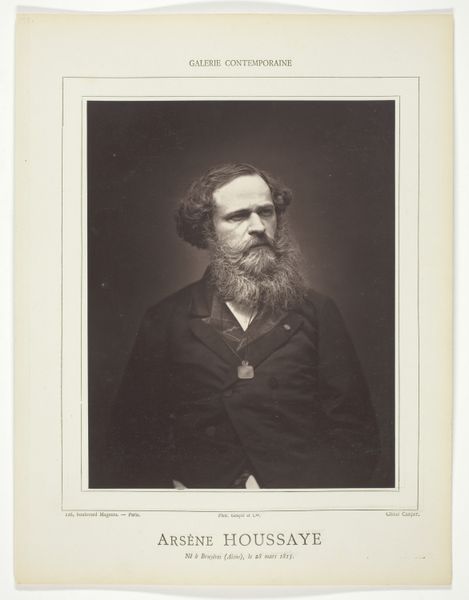
Dimensions: 25 × 21.2 cm (arched)
Copyright: Public Domain
Editor: Here we have Julia Margaret Cameron's "The Dirty Monk, Alfred Tennyson" from 1865, a gelatin-silver print currently residing in The Art Institute of Chicago. It's a striking portrait; very intimate despite its somewhat…unrefined quality. It seems quite different from the formal portraits one often sees of prominent figures from this period. What's your take on this, considering its historical context? Curator: This photograph challenges our traditional understanding of portraiture and the public image. Tennyson, as Poet Laureate, occupied a significant position. But Cameron's portrayal deviates from the idealized representations that were customary. The deliberate imperfections – the soft focus, the unconventional title referencing his unkempt appearance – are key to understanding its impact. It begs the question: what statement was Cameron making by presenting Tennyson in this light? Editor: So, it’s a deliberate choice, not a technical flaw? I mean, could it also be related to the rise of photography and a need to establish a different aesthetic from painting? Curator: Absolutely. Photography, in its early stages, grappled with its status as an art form. Cameron's embrace of these "imperfections" was a way to assert photography's unique aesthetic capabilities, distinct from painting's pursuit of flawless realism. It's also crucial to remember Cameron’s social circle and her championing of artistic license, pushing boundaries in what was acceptable within Victorian society. Think about the Pre-Raphaelites; does this photograph remind you of that aesthetic at all? Editor: Yes, there's a raw honesty similar to the Pre-Raphaelites' approach to beauty and subject matter, even within the frame of classicism. So Cameron's image is a subtle commentary on established social norms, a democratizing force. Curator: Exactly. She wasn’t merely capturing an image; she was actively shaping perceptions and engaging in a dialogue about the public versus the private self. Consider how this photograph may have been received by a public accustomed to more conventional depictions of authority figures. That contrast generates its power. Editor: It’s a fascinating insight! I now see "The Dirty Monk" as more than just a portrait. It really prompts questions about representation and its role in shaping cultural perceptions. Thank you. Curator: And hopefully, this also shows how artistic and technological innovation goes hand in hand with social perception. It all goes together!
Comments
No comments
Be the first to comment and join the conversation on the ultimate creative platform.
